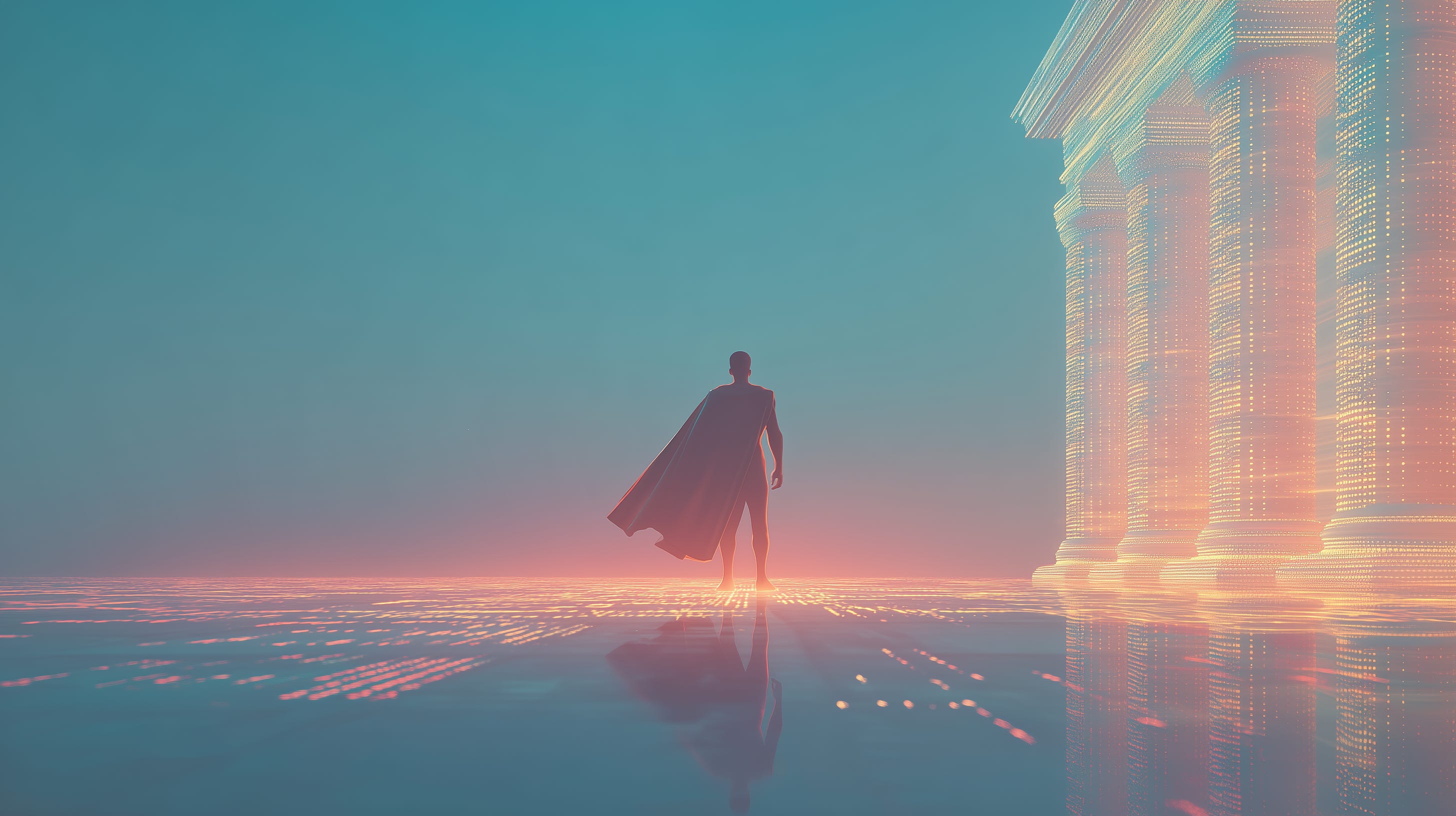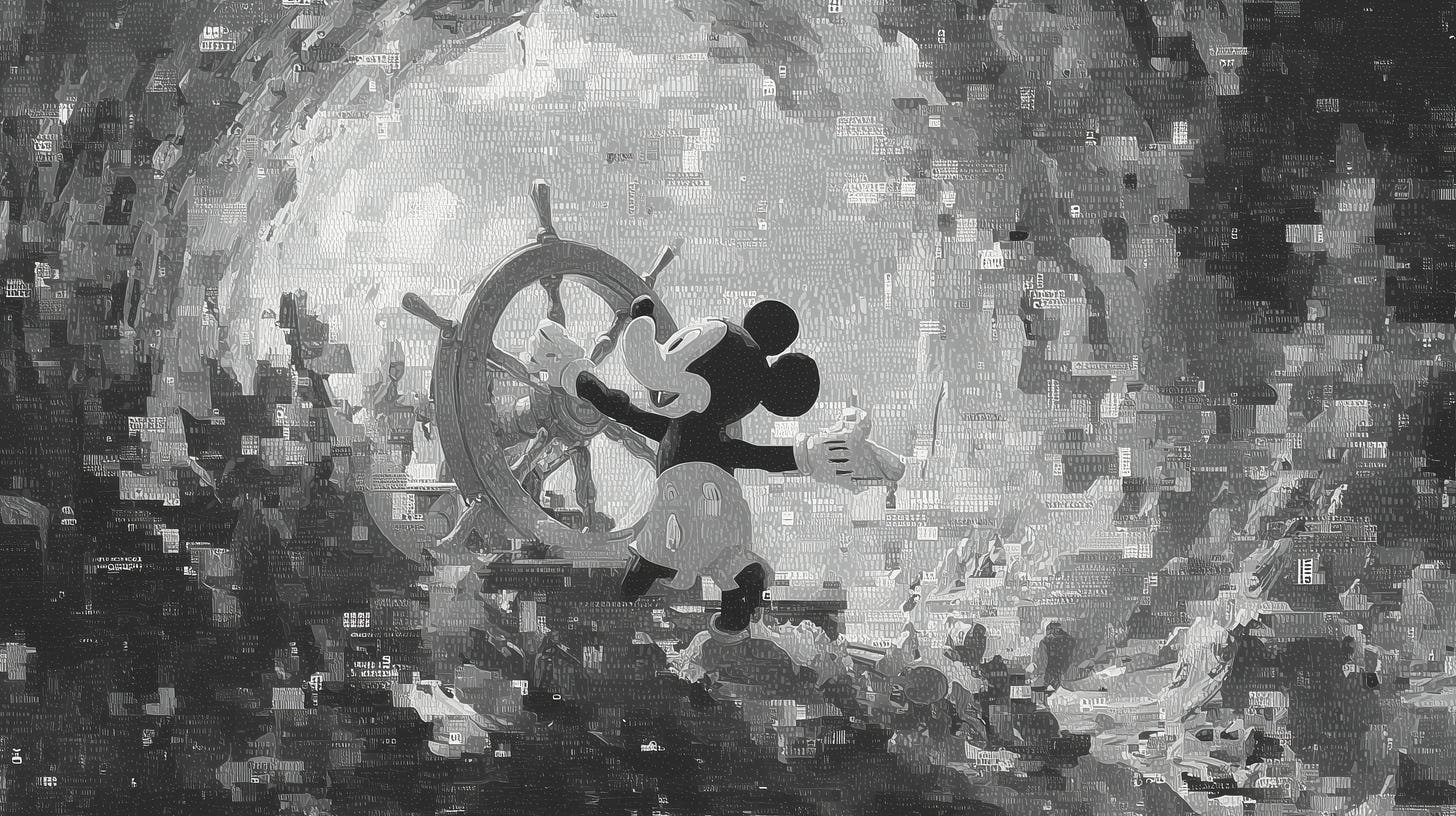Fine Print: Is AI Faster than Superman?
AI isn’t just the speeding bullet — it’s kryptonite. And the real showdown is copyright vs. trademark.
Superman’s next fight isn’t Lex Luthor, it’s Midjourney.
Warner Bros. Discovery has filed suit against Midjourney for unauthorized use of characters like Superman, Batman, and Scooby-Doo. It’s the latest in a wave of lawsuits where creative industries are taking direct aim at AI companies, and it cuts to the heart of how AI collides with copyright and trademark law.
Why it matters: This marks a new escalation in copyright litigation, with major studios directly targeting AI image generators. Superman may be the one in the courtroom this time, but make no mistake, the entire Justice League of IP is on the line.
In this fight, AI is shaping up to be copyright’s kryptonite — powerful enough to replicate cultural icons in seconds, but lethal to the protections that keep them under lock and key.
Setting the Record Straight
A lot of people assume Superman should already be in the public domain — after all, wasn’t copyright capped at 75 years? That used to be true. But in 1998, Congress passed the Copyright Term Extension Act (a.k.a. the “Mickey Mouse Protection Act”), which added 20 more years to corporate copyrights.
Superman should’ve been public domain in 2013. Instead, the 1938 Action Comics #1 won’t enter until 2034 — 95 years after publication.
⚖️ Copyright vs. Trademark, Explained
Copyright is like renting an apartment — the lease eventually runs out. Trademark is like owning the building’s name and address. As long as you maintain it, that ownership lasts.
By 2034, only the original 1938 depiction of Superman and those first storylines become free to use. That version looked different: no flying, a simpler costume, and none of the now-familiar mythology. Krypton, Lex Luthor, kryptonite, and the Daily Planet all came later and remain protected under copyright for decades.
And trademarks? DC Comics will still hold the trademark to the Superman name, the “S” shield logo, and the broader visual identity. Which means you could reprint Action Comics #1, but you can’t launch a new “Superman” story without flying headfirst into trademark law.
📊 Case Summary TL;DR
Q: When does Superman enter the public domain?
A: In 2034. But only the 1938 version — trademarks and later storylines remain protected.
The Mickey Mouse Precedent
Disney’s handling of Steamboat Willie earlier this year showed how aggressively studios enforce trademarks to keep a grip on their icons, even after copyright expires. One company tried to slap the vintage Mickey on packaging — and was sued for misleading consumers. Warner Bros. is signaling the same strategy with Superman.
Steamboat Willie entered the U.S. public domain on January 1, 2024. The imagery is free to use, but Disney’s trademark protections still apply: a clear example of how copyright expiration doesn’t always mean creative freedom.
In an AI age where character likenesses can be generated instantly, that line matters more than ever.
The Verdict
Copyright expiration ≠ creative freedom. For cultural icons like Superman, trademarks remain the ultimate shield and studios know it. In the generative era, the difference between copyright and trademark isn’t fine print — it’s the whole page.
For Superman and the rest of the Justice League of IP, the fight isn’t about faster tech — it’s about who controls the rights when the clock runs out. Warner Bros vs. Midjourney is just the opening battle.
💬 Your turn:
When Superman hits the public domain in 2034, should creators be free to remix him, or do trademarks make that impossible?
🧬 This is part of my Fine Print series — one-liner insights, screenshots + commentary, and quick contract-lens views on the places where AI, creativity, and compliance collide.
Stay in the loop →
Your comments sharpen the argument. Your shares spread the strand. Both mean the world.




